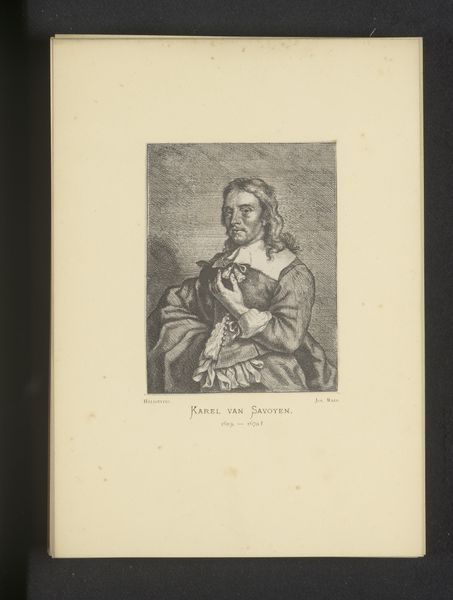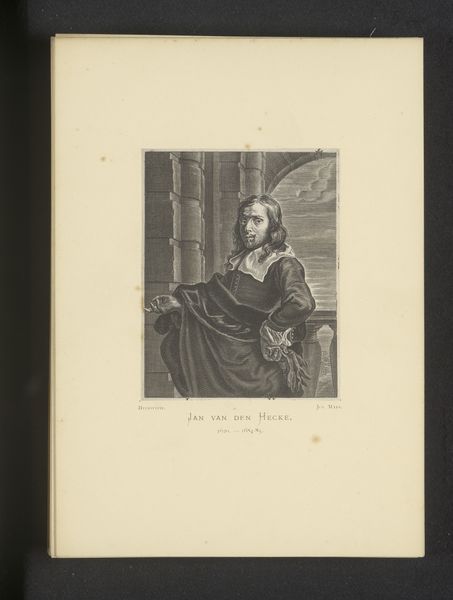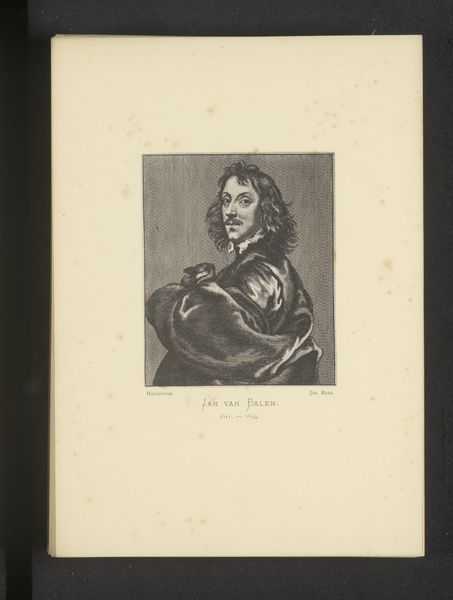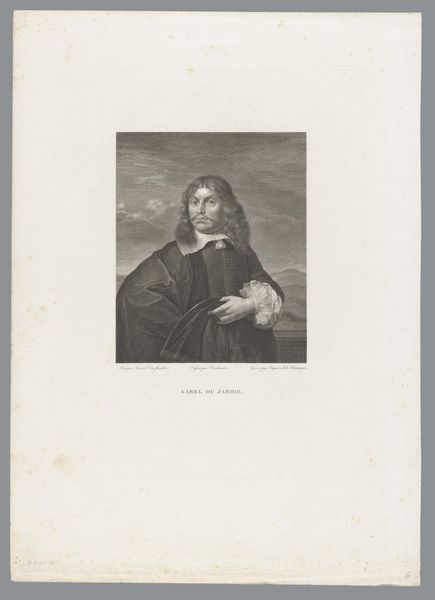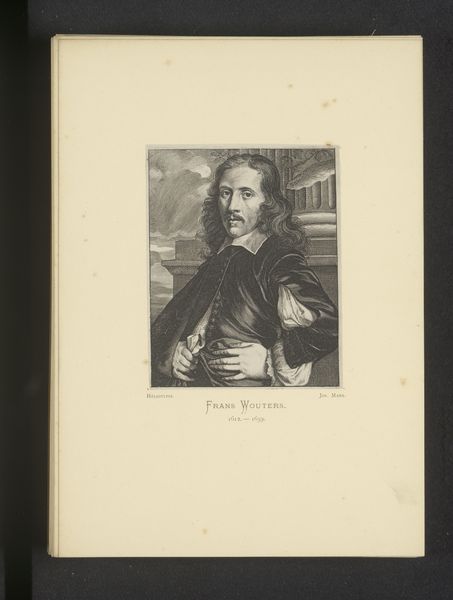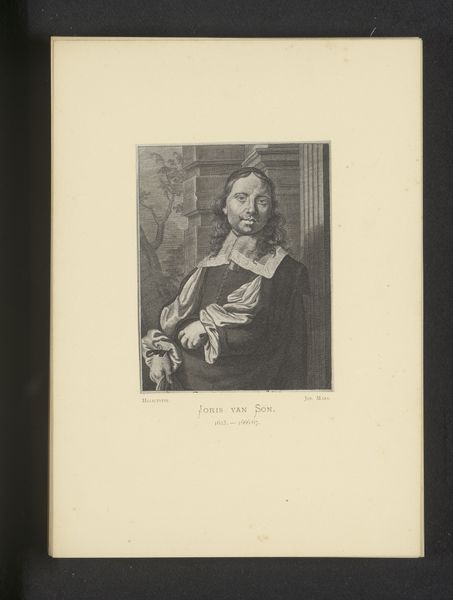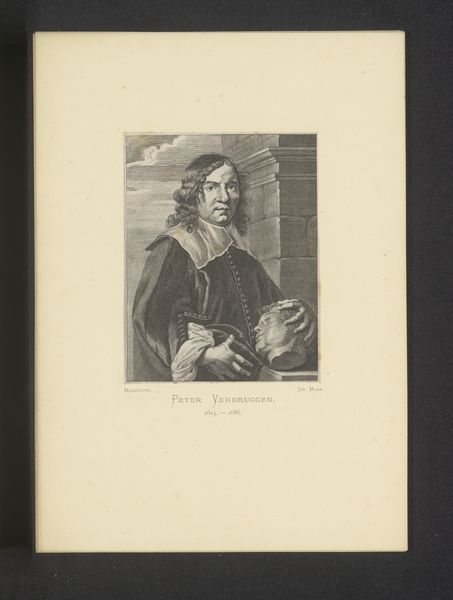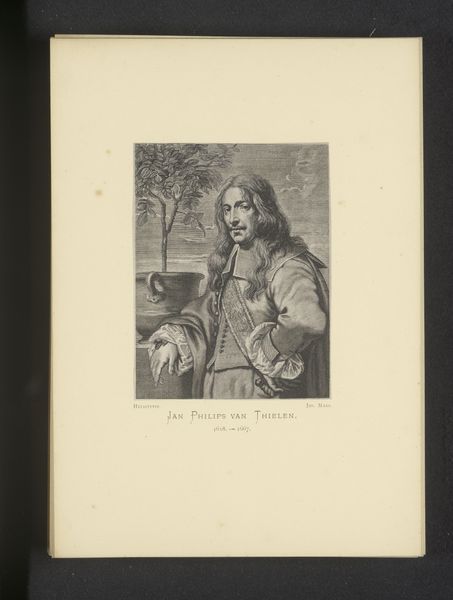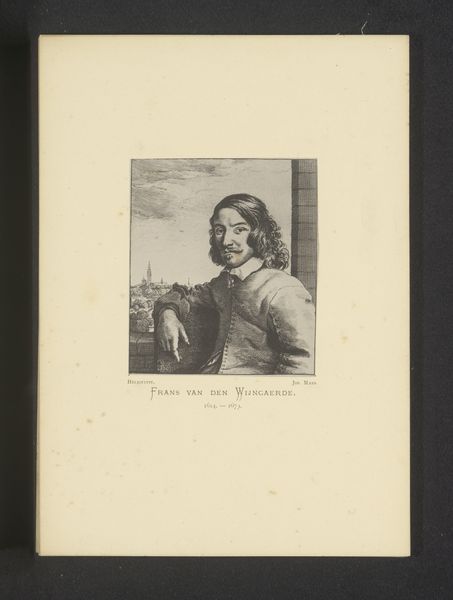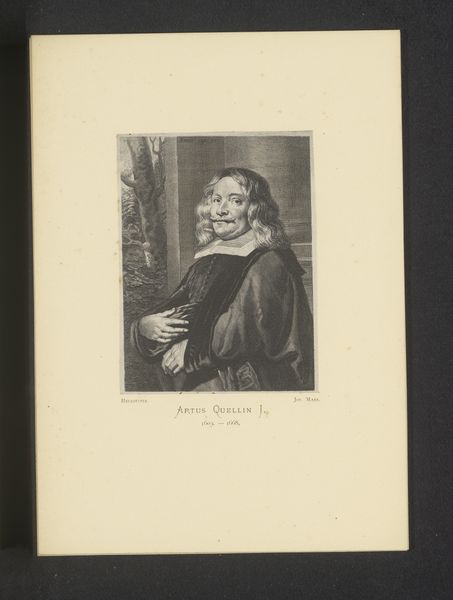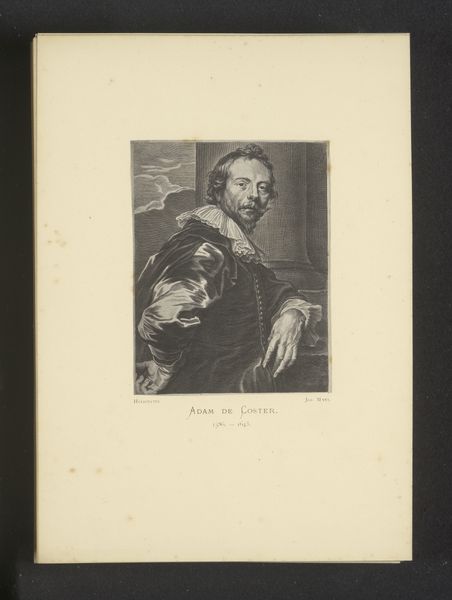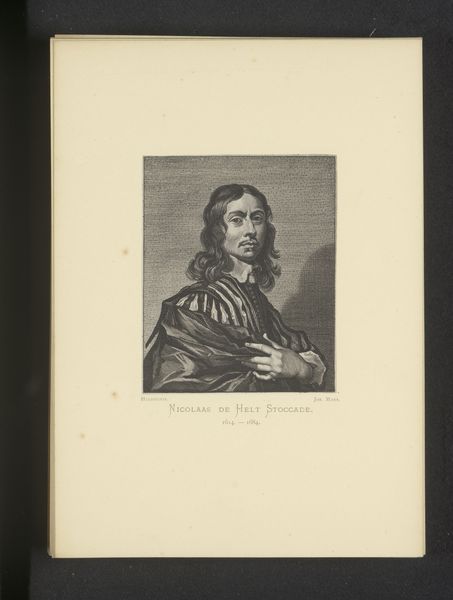
Reproductie van een gravure van een portret van Jan Peeters door Lucas Vorsterman (I) before 1877
0:00
0:00
Dimensions: height 108 mm, width 90 mm
Copyright: Rijks Museum: Open Domain
Curator: This is a reproduction of a baroque portrait of Jan Peeters, engraved by Lucas Vorsterman. What strikes you most about it? Editor: I’m really drawn to how Joseph Maes captured the likeness in this reproduction; it gives off a real sense of formality. The shading and lines of the engraving seem quite stark and imposing for what I would usually imagine when looking at a reproduction on paper. What aspects stand out to you, as you look at the broader implications behind it? Curator: The choice to reproduce Vorsterman’s engraving speaks volumes. Why revisit this image, of this man, in this particular style? Think about the power dynamics inherent in portraiture during the Baroque era. Jan Peeters was a celebrated marine painter; what does it signify to memorialize him in this way, and what social strata does this act reflect? Editor: So it's about immortalizing a specific persona within a hierarchy? And what's particularly intriguing to me is this isn't the original artwork but a print based on the portrait of someone celebrated. So what does this layered approach do to our perception of the artist Jan Peeters? Curator: Exactly. The very act of reproducing it later shifts that initial power, placing it within new conversations about art's role in shaping legacy. By reproducing Vorsterman’s work, the artist comments on how historical figures are remembered. Think about how class, profession, and artistic skill all play a role in shaping not just identity, but the preservation and manipulation of it throughout time. How can this understanding enrich contemporary perspectives and shed new light on societal dynamics, challenging conventions? Editor: That's definitely changed how I view this print. Seeing the subject within broader socio-political issues gives me a better handle on reading into older portraits like these! Thanks! Curator: It encourages critical engagement with images beyond their surface representation. Analyzing art through socio-historical lenses encourages a more questioning and nuanced understanding of its purpose.
Comments
No comments
Be the first to comment and join the conversation on the ultimate creative platform.
